| Punchbowl Cemetery Few national cemeteries can compete with the dramatic natural setting of the National Memorial Cemetery of the Pacific. The “Punchbowl” was formed some 75,000 to 100,000 years ago during the Honolulu period of secondary volcanic activity. A crater resulted from the ejection of hot lava through cracks in the old coral reefs which, at the time, extended to the foot of the Koolau Mountain Range. |
|
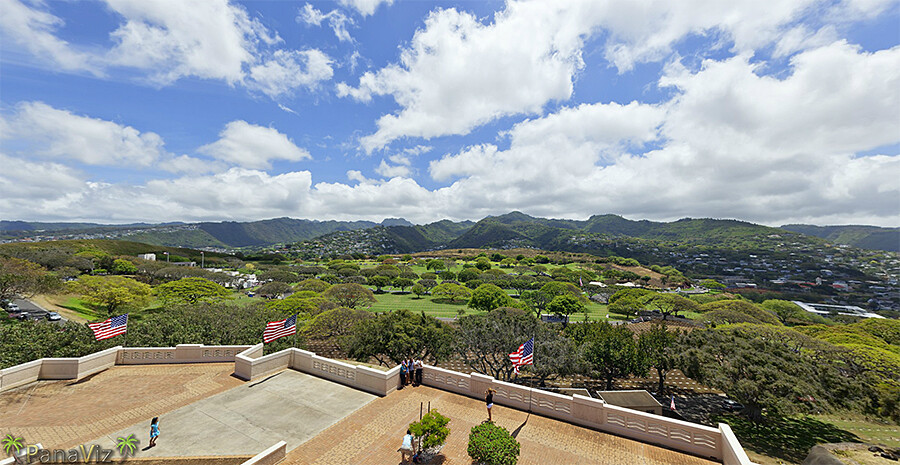
During the late 1890s, a committee recommended that the Punchbowl become the site for a new cemetery to accommodate the growing population of Honolulu. The idea was rejected for fear of polluting the water supply and the emotional aversion to creating a city of the dead above a city of the living.
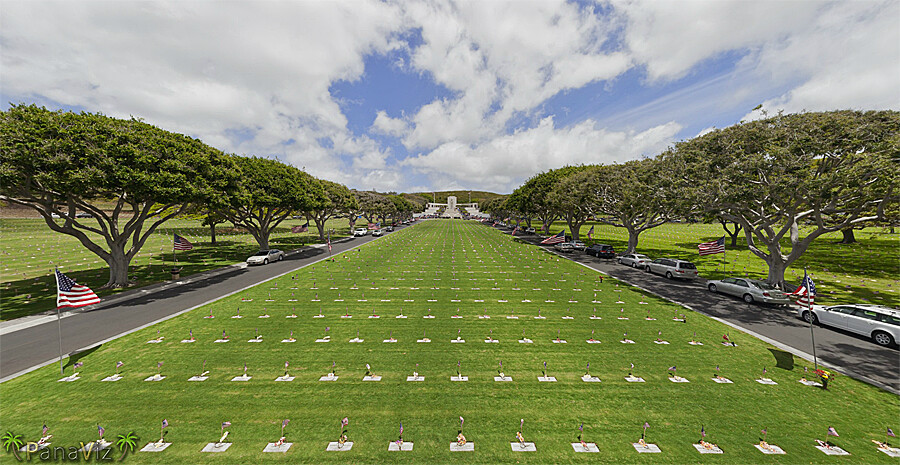
Fifty years later, Congress authorized a small appropriation to establish a national cemetery in Honolulu with two provisions: that the location be acceptable to the War Department, and that the site would be donated rather than purchased. In 1943, the governor of Hawaii offered the Punchbowl for this purpose. The $50,000 appropriation proved insufficient, however, and the project was deferred until after World War II. By 1947, Congress and veteran organizations placed a great deal of pressure on the military to find a permanent burial site in Hawaii for the remains of thousands of World War II servicemen on the island of Guam awaiting permanent burial. Subsequently, the Army again began planning the Punchbowl cemetery; in February 1948 Congress approved funding and construction began.
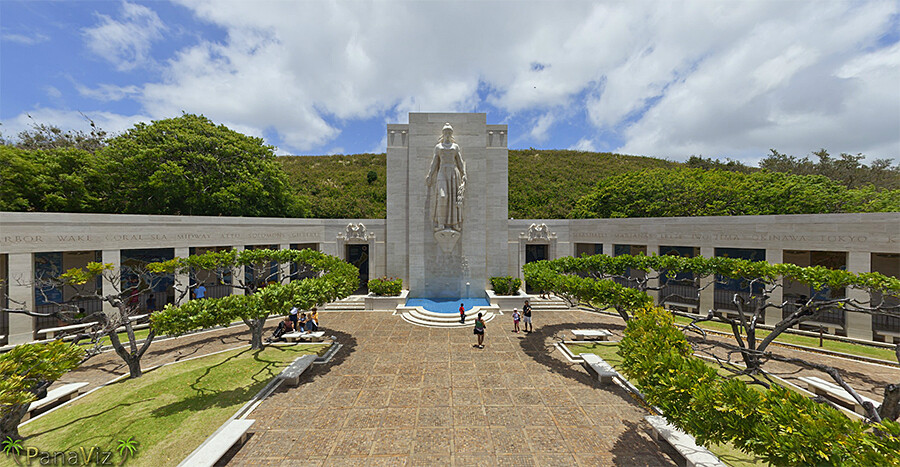
Prior to the opening of the cemetery for the recently deceased, the remains of soldiers from locations around the Pacific Theater—including Wake Island and Japanese POW camps—were transported to Hawaii for final interment. The first interment was made Jan. 4, 1949. The cemetery opened to the public on July 19, 1949, with services for five war dead: an unknown serviceman, two Marines, an Army lieutenant and one civilian—noted war correspondent Ernie Pyle. Initially, the graves at National Memorial Cemetery of the Pacific were marked with white wooden crosses and Stars of David—like the American cemeteries abroad—in preparation for the dedication ceremony on the fourth anniversary of V-J Day. Eventually, over 13,000 soldiers and sailors who died during World War II would be laid to rest in the Punchbowl.
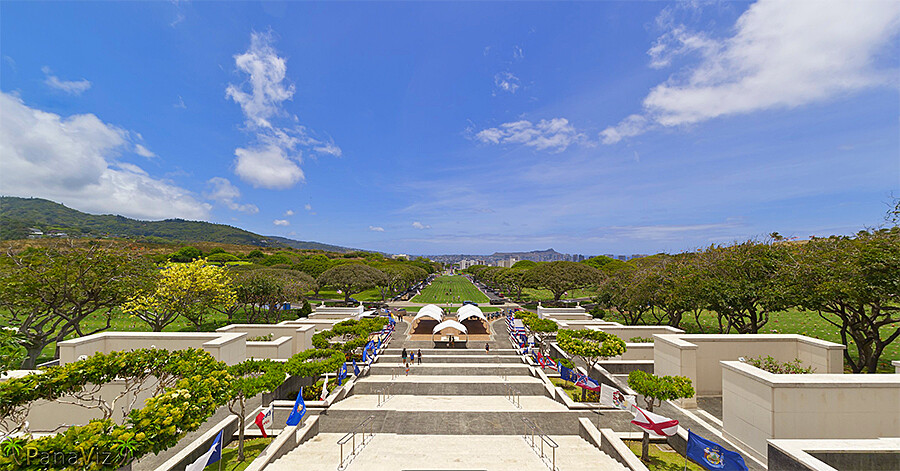
Despite the Army’s extensive efforts to inform the public that the star- and cross-shaped grave markers were only temporary, an outcry arose in 1951 when permanent flat granite markers replaced them. A letter from the Quartermaster General to Senator Paul Douglas in December 1952, explained that while individual markers are inscribed according to the appropriate religious faith:
Crosses do not mark the graves of the dead of our country in other national cemeteries. No cross marks the burial of our revered Unknown Soldier. From Arlington to Golden Gate, from Puerto Rico to Hawaii, the Government’s markers in national cemeteries for all our hero—dead are of the traditional designs…[s]ome are upright and some are flat. None is in the form of a religious emblem.
The National Memorial Cemetery of the Pacific was the first such cemetery to install Bicentennial Medal of Honor headstones, the medal insignia being defined in gold leaf. On May 11, 1976, a total of 23 of these were placed on the graves of medal recipients, all but one of whom were killed in action. The Punchbowl has become one of the area’s most popular tourist destinations. More than five million visitors come to the cemetery each year to pay their respects to the dead and to enjoy the panoramic view from the Punchbowl. One of the most breathtaking views of the Island of Oahu can be found while standing at the highest point on the crater’s rim.
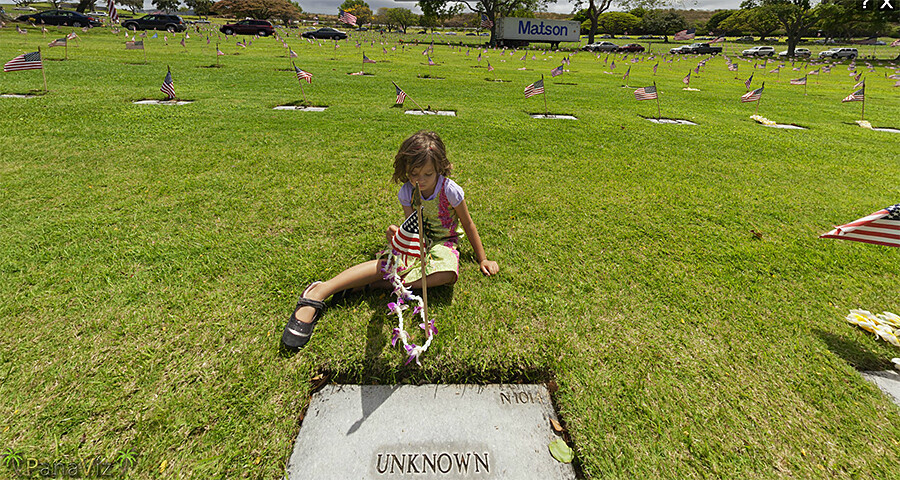
In August 2001, about 70 generic unknown markers for the graves of men known to have died during the attack on Pearl Harbor were replaced with markers that included “USS Arizona” after it was determined they perished on this vessel. In addition, new information that identified grave locations of 175 men whose graves were previously marked as unknown resulted in the installation of new markers in October 2002. The National Memorial Cemetery of the Pacific was placed on the National Register of Historic Places in 1976.
Monuments and Memorials
The National Memorial Cemetery of the Pacific contains a memorial pathway that is lined with a variety of memorials that honor America’s veterans from various organizations. As of 2008, there were 56 such memorials throughout the National Memorial Cemetery of the Pacific—most commemorating soldiers of 20th-century wars, including those killed at Pearl Harbor.
Historical information from U.S. Department of Veteran Affairs. http://www.cem.va.gov/cems/nchp/nmcp.asp
What is a spy app and how can it make your life better?
